Best Mobile Esports Games 2025: Top Competitive Titles & Trends
Updated On: November 29, 2025 by Aaron Connolly
Top Mobile Esports Games of 2025
Mobile esports keep smashing viewership records in 2025. Battle royale shooters and MOBAs lead the scene, drawing massive crowds and huge prize pools.
Major tournaments now offer more than £1 million, and millions of fans tune in to watch pro matches for these four powerhouse games.
PUBG Mobile
PUBG Mobile really sits at the top of the mobile esports world right now. It’s got the biggest prize pools and probably the most organized tournament structure out there.
The World Championship pulls in over 100 million viewers worldwide. That’s honestly more than some traditional sports events ever get.
Pro teams drop into 100-player battle royales across different maps. Tournaments span several days, and teams rack up points for both placement and eliminations.
Top squads can rake in six-figure salaries just from sponsorships.
Key competitive features:
- Multiple game modes: classic battle royale and arena matches
- Cross-platform compatibility with console and PC
- Regular seasonal updates that keep the meta interesting
- Coaching infrastructure with pro analysts
The game’s esports ecosystem includes regional leagues in Asia, Europe, and the Americas. Major event prize pools often top £2 million, with the Global Championship offering the biggest rewards in mobile gaming.
Mobile Legends: Bang Bang
Mobile Legends: Bang Bang (MLBB) absolutely dominates Southeast Asia and has gone global with huge tournament productions. The M6 World Championship set new viewership records, with over 5 million people watching the finals at the same time.
This 5v5 MOBA gives you 10-15 minute matches and over 120 different heroes to master. Pro teams draft strategies on three-lane maps, so timing and team coordination are everything.
The learning curve feels a bit easier than PC MOBAs, which makes it a good entry point for new competitive players.
Tournament structure includes:
- Regional leagues with promotion and relegation
- International championships featuring teams from 16+ countries
- Mobile Legends Professional League runs year-round
- Academy leagues to develop new talent
Major MLBB tournaments now reach £1.5 million in prize money every year. The top players can bring in over £200,000 annually from contracts and endorsements.
Arena of Valor
Arena of Valor keeps a strong competitive scene alive, especially in Europe and Latin America. The game offers more strategic depth than most casual mobile games, so pro matches require tons of prep and analysis.
Teams battle in best-of-five series using draft-pick systems just like traditional MOBAs. Coaching staff and analysts really dig into stats for every match.
Competitive advantages include:
- Shorter matches (15-20 minutes)
- Lower hardware requirements than PC MOBAs
- Strong regional tournament circuits
- Partnerships with major esports orgs
The World Cup format brings in national teams, so players represent their countries. This adds a cool layer of national pride and gets viewers even more invested.
Free Fire
Free Fire has built the largest player base among mobile battle royales, especially in Brazil, India, and Southeast Asia. Matches have 50 players and last about 10 minutes, which fits mobile-first audiences perfectly.
The Free Fire World Series gives out over £1 million in prize money across regional qualifiers and global finals. Pro players take on specialized roles—think in-game leaders, fraggers, and supports.
Competition highlights:
- Fastest-growing viewership in mobile esports
- Regional diversity with teams from six continents
- Easy entry requirements for amateurs
- Content creator integration with tournaments
Top Free Fire teams master character abilities, weapon mechanics, and map positioning. Coaches and analysts now play a big part, opening up career paths beyond just playing.
Other Leading Competitive Mobile Games
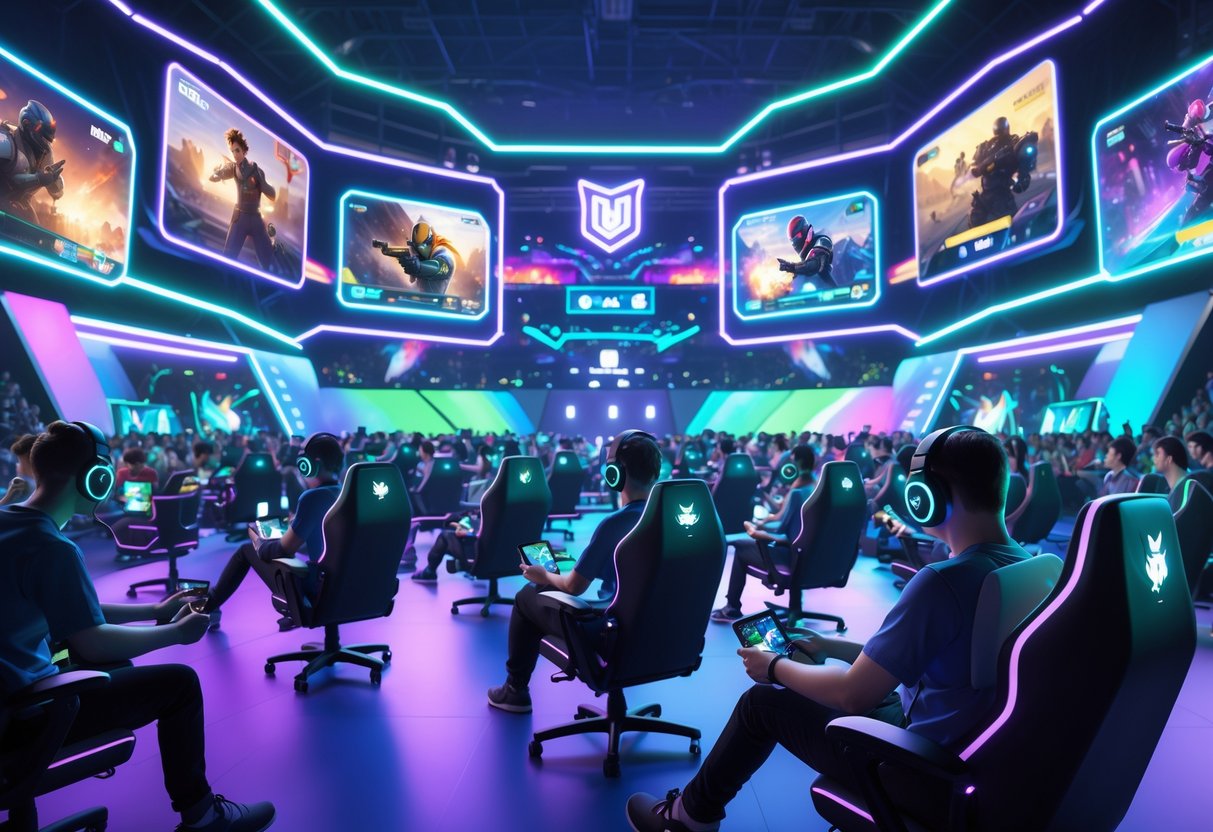
These four titles make up the core of mobile esports, but they’re not the whole story. Call of Duty brings console-quality FPS action to phones, while Clash Royale and Brawl Stars highlight Supercell’s grip on competitive mobile strategy.
Call of Duty: Mobile
Call of Duty: Mobile brings iconic multiplayer action straight from consoles to your phone. The game offers a bunch of competitive modes like deathmatches, team battles, and battle royale.
Supercell nailed the controls here. Custom setups work great on touchscreens, and honestly, we think the three-finger schemes let skilled players aim as well as they do on console.
The esports scene revolves around seasonal tournaments with solid prize pools. Pro teams battle it out in organized leagues across regions.
Key competitive features:
- Voice chat integration for team comms
- Regular seasonal updates
- Cross-platform play
- Ranked progression system
Most people start with public matches, then move into ranked. The game rewards smart tactics and map knowledge more than just twitch shooting.
Clash Royale
Supercell’s real-time strategy hit mixes card collecting with intense PvP battles. Players build eight-card decks and fight in three-minute matches that require fast decisions.
The competitive scene centers on Crown Championship events and regional qualifiers. Major tournaments often have prize pools over £100,000.
Clash Royale stands out for being genuinely skill-based. Deck choices, elixir management, and timing matter way more than spending money on cards.
We usually recommend starting with Classic Challenges before diving into Grand Challenges. The 100-gem entry fee for Grands can get expensive pretty quickly.
Tournament structure:
- Ladder seasons reset every month
- Global Tournament events with big rewards
- Crown Championship as the world finals
- Clan Wars for team competition
The game’s theorycrafting community is always active. Strategies shift all the time since Supercell drops balance updates every month.
Brawl Stars
Supercell made Brawl Stars their most accessible competitive game by far. Matches are just three minutes long, and the cartoon graphics really pull in younger players.
There are several competitive modes, from Gem Grab to Brawl Ball. Each one needs different strategies and brawler picks.
Pro Brawl Stars tournaments happen worldwide, with teams fighting for six-figure prize pools. The Brawl Stars Championship is the top-tier event.
Core competitive elements:
- 33+ unique brawlers with different abilities
- Team compositions make a big difference
- Map rotation keeps things interesting
- Star Powers and Gadgets add depth
Honestly, the game rewards team coordination over solo skill. Playing with friends almost always beats solo queue.
The Power League ranked system lets players climb from Bronze to Legendary. Most competitive folks focus on mastering a dozen brawlers instead of unlocking everything.
Honor of Kings
Tencent’s global version of their Chinese MOBA brings classic 5v5 gameplay with heroes inspired by Chinese mythology.
There’s no pay-to-win—all purchases are purely cosmetic. That keeps competitive balance fair, so skill actually decides matches.
Honor of Kings matches usually last around 15 minutes, making it more accessible than most PC MOBAs. The shorter format fits mobile gaming lifestyles.
Tencent keeps investing in the competitive scene with regional tournaments and big prize pools. The game’s esports presence keeps growing year after year.
Competitive features:
- Ranked mode with seasonal resets
- Draft pick system for fair play
- Full voice-over in multiple languages
- Regular hero releases to shake up the meta
The learning curve feels easier than League or Dota 2. New players can actually help their teams win after just a few weeks.
We suggest picking up two roles at first. Support and jungle tend to have the biggest impact on matches.
Major Esports Genres on Mobile
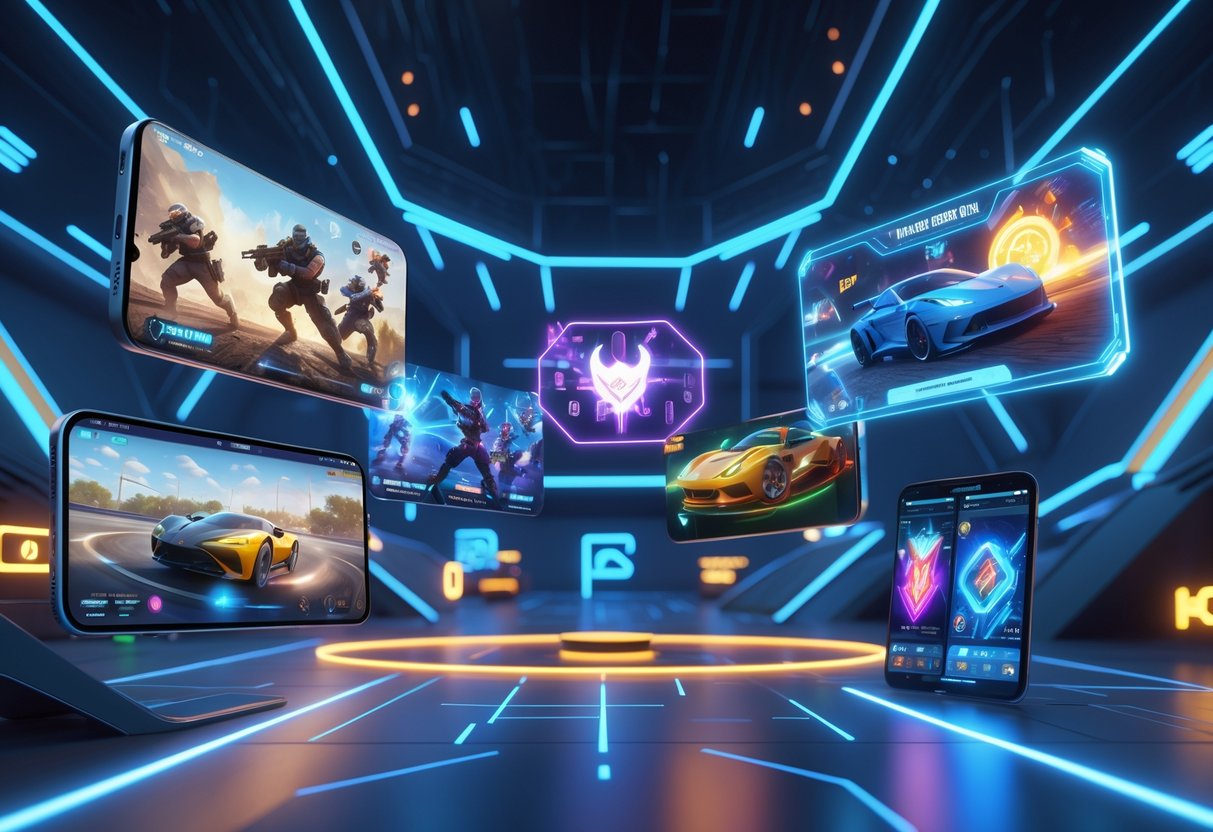
Mobile esports really center on two main competitive formats. MOBA games are all about strategy and teamwork, while battle royale titles test survival instincts against dozens of opponents.
MOBA Games
MOBAs lead the mobile esports charge with their 5v5 team-based gameplay. These games demand tight coordination and smart planning.
Mobile Legends: Bang Bang runs the show with massive tournaments, especially in Southeast Asia. Teams clash on three-lane maps, each hero bringing unique abilities. Matches usually run 15-20 minutes.
Honor of Kings delivers classic MOBA action, but with heroes from Chinese myths. No pay-to-win here—just pure competition. Players can jump into ranked modes or custom tournaments.
Pokémon Unite offers a more accessible MOBA twist. Teams of five Pokémon battle to rack up points instead of destroying bases. This makes for faster, more dynamic matches that fit mobile players.
These games require teamwork and clear communication. Players need to master roles like tank, support, or damage dealer to really shine.
Battle Royale Games
Battle royale games throw tons of players into a shrinking map and see who survives. The tension and high stakes make them perfect for mobile esports fans.
PUBG Mobile still reigns as the king. Up to 100 players drop in, using realistic weapons and vehicles, all while the map gets smaller. Pro tournaments feature huge prize pools and worldwide fame.
Garena Free Fire offers quicker, 10-minute matches with 50 players. It’s ideal for mobile devices and anyone with a short attention span. The game also adds unique character abilities and customizable maps.
Call of Duty Mobile blends classic multiplayer with battle royale. Players can swap between team deathmatches and big survival modes. Frequent seasonal content keeps things fresh for competitors.
These games reward quick thinking and smart map movement. Success comes from balancing aggression with smart positioning as the play zone shrinks.
Most Influential Game Developers and Publishers
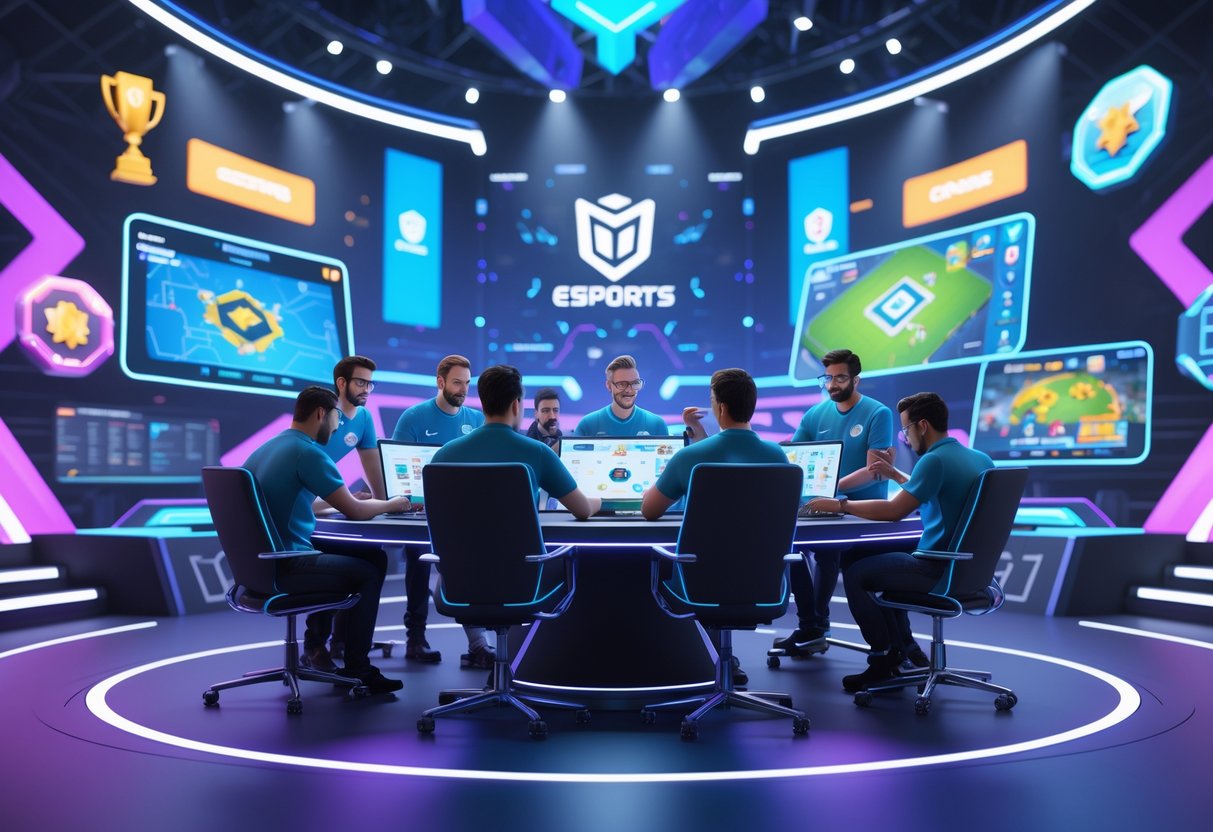
A handful of companies really shape the mobile esports scene. Their popular games and tournament investments drive the industry, and they’ve built some of the most-watched mobile esports titles anywhere.
Riot Games
Riot Games keeps expanding beyond PC and has made a real splash in mobile esports. Their mobile games bring the same competitive edge that made League of Legends a legend.
Wild Rift is their flagship mobile esports title. It sticks to the MOBA formula but feels right at home on phones.
Riot focuses on building long-term competitive ecosystems. They invest a lot in regional leagues and international tournaments.
Their experience with PC esports gives them a real edge. They know how to make tournaments exciting for both players and viewers.
Prize pools from Riot often go over $1 million for major events. Their production quality really sets the bar for mobile esports broadcasts.
Moonton
Moonton basically owns mobile esports with Mobile Legends: Bang Bang (MLBB). The game ranks as the most-watched mobile esports title year after year.
MLBB tournaments broke viewership records in 2024. Four of the top ten esports events by peak viewers were MLBB matches.
The MPL Indonesia Season 14 pulled in more viewers than even some big PC esports events, like League of Legends MSI or CS2 majors.
Moonton’s regional league system keeps fans engaged all year. The Mobile Legends Professional League runs in multiple countries, each with its own dedicated audience.
Their M7 World Championship stretches into January 2026, and they’ve locked in a spot at the South East Asia Games 2025 in Thailand.
Prize distribution focuses on regional growth instead of just one huge tournament. This helps build a sustainable competitive scene in every market.
Supercell
Supercell has shaken up the world of casual mobile games, turning them into serious esports battlegrounds. Brawl Stars stands out as their main esports project, and honestly, its growth has been wild.
The Brawl Stars World Championship 2024 pulled in some of the biggest global mobile esports audiences. Instead of a traditional prize pool, they went for a crowdfunded system that got people talking.
Players funded the prize by buying in-game skin bundles, pushing the pool to $1 million. The champions took home $400,000, all thanks to the community.
Supercell doesn’t follow the usual publisher playbook. They lean on their player base to support the competitive scene, skipping the standard corporate sponsorship route.
Clash Royale still keeps a competitive scene alive, too. Supercell shifts its attention between games depending on what the community wants and who’s tuning in.
Their Finnish development style is all about quality, not quantity. They don’t crank out endless titles, but the ones they do release feel polished and ready for serious competition.
Tencent
Tencent wears both the developer and publisher hats for some of mobile esports’ biggest games. Their lineup includes titles that hand out some of the highest prize money in the business.
Honor of Kings is Tencent’s flagship esports investment. In 2024, they put up over $20 million in prize pools—pretty staggering.
PUBG Mobile sits under Tencent’s umbrella, too, thanks to their subsidiary. The game paid out more than $16 million in prize money and landed fourth worldwide for esports prize totals.
Looking ahead, their 2025 roadmap features three huge international tournaments. They picked Tashkent, Thailand, and Riyadh for these events and plan to ramp up regional competitions.
Arena of Valor targets certain regions and tweaks its tournament formats to fit local tastes. Tencent really pays attention to what viewers in each market want.
With Tencent’s deep pockets, they’re able to keep investing in mobile esports even when profits aren’t immediate. They’re clearly in it for the long haul, building up the competitive scene year after year.
Mobile Esports Scene in 2025
Mobile esports has just exploded. We’re talking about a multi-million pound industry with tournaments pulling in more than 1.7 million viewers. Prize pools have hit over £20 million for some titles, and regional leagues are giving up-and-comers real opportunities.
Global Tournaments and Championships
Mobile Legends: Bang Bang leads the charge. Its IPL Indonesia Season 15 alone reached 1.7 million peak viewers. The game runs about 16 major tournaments every year, and it’s basically become the face of mobile esports.
PUBG Mobile still draws a global crowd, even if its viewership dipped since 2021’s 3.8 million peak. The Global Championship is still the main event, usually attracting between 900,000 and a million viewers.
Honor of Kings is pushing hard with 85 tournaments in 2024. The 2025 Invitational Season 3 got up to 380,000 peak viewers, and honestly, it’s growing fast.
Arena of Valor does things differently—fewer events, but each one feels big. Only three tournaments so far this year, but Arena of Glory Spring 2025 still hit 550,000 peak viewers.
Regional Leagues and Communities
Regional leagues really make mobile esports tick. Southeast Asia dominates, and Indonesia especially stands out with its Mobile Legends events.
China’s King Pro League for Honor of Kings keeps fans glued to their screens. Their partnership with Rednote shows how social media and esports can blend together.
Europe and North America tend to focus more on PUBG Mobile leagues. The Super League Southeast Asia Spring 2025 is a great example of how regions create real paths for players to climb.
Big names like NAVI are getting into mobile esports now. That kind of move gives the whole scene more credibility and brings in some classic esports infrastructure.
Major Prize Pools and Viewership
Prize pools have gotten serious. Honor of Kings handed out over £20 million in the last year.
PUBG Mobile paid out £16.5 million across 283 tournaments in 2024. Even with fewer events this year, they’ve already distributed £300,000 over 24 tournaments.
Arena of Valor usually offers about £2 million a year, although 2025’s been slow so far with no prize money yet. The International Championships and Premier League should turn things around.
Mobile esports viewership often leaves traditional sports in the dust. Peak audiences regularly top 500,000, and the biggest events break that million mark.
The mobile format is just more accessible. Anyone with a phone can play—no need for expensive gear. It’s genuinely democratising competitive gaming.
Breakout Mobile Titles to Watch This Year
Two massive PC esports titles are finally making their mobile debuts. League of Legends: Wild Rift brings a streamlined MOBA to your phone, and Valorant Mobile is promising tactical FPS action on the go.
League of Legends: Wild Rift
Wild Rift captures the core League of Legends vibe but in fast, 15-minute bursts. Riot Games built it specifically for mobile—this isn’t just a port.
The controls are streamlined for touch, and after a few matches, the twin-stick setup feels surprisingly natural. There’s auto-targeting for newcomers, but if you want to outplay someone, you can with manual aim.
Tournament prize pools have jumped up across Asia and Europe. The Wild Rift Icons Global Championship already offers sizable rewards, and Southeast Asian leagues are pulling in millions of viewers.
Wild Rift stands out for its accessibility. New players can pick it up quickly, but there’s still a high skill ceiling for those who want to grind and master the game. Champion abilities are a bit simpler, but timing and positioning still matter.
Quick tip: If you’re new, try beginner-friendly champions like Garen or Annie before you jump into trickier picks like Yasuo.
Valorant Mobile
Riot is bringing its tactical shooter to mobile, and they’re planning full crossplay. Early beta footage shows off precise gunplay that actually feels like Valorant, even on a touchscreen.
The mobile version keeps all the signature stuff: agent abilities, economic rounds, and tactical gameplay. Every round counts, just like on PC. Expect the usual 5v5 bomb-plant format.
Control customisation is a big deal here. Beta players say it takes a while to dial in your settings, but once you do, it’s worth it. There’s aim assist for different skill levels, too.
Riot wants to connect mobile tournaments with the Valorant Champions Tour, so mobile players could compete alongside PC pros in some formats. Prize pools should match the biggest names in mobile esports.
Heads up: If you’re new to tactical shooters, be ready to learn. The game rewards patience and teamwork over flashy solo plays.
Key Features of Top Mobile Esports Games
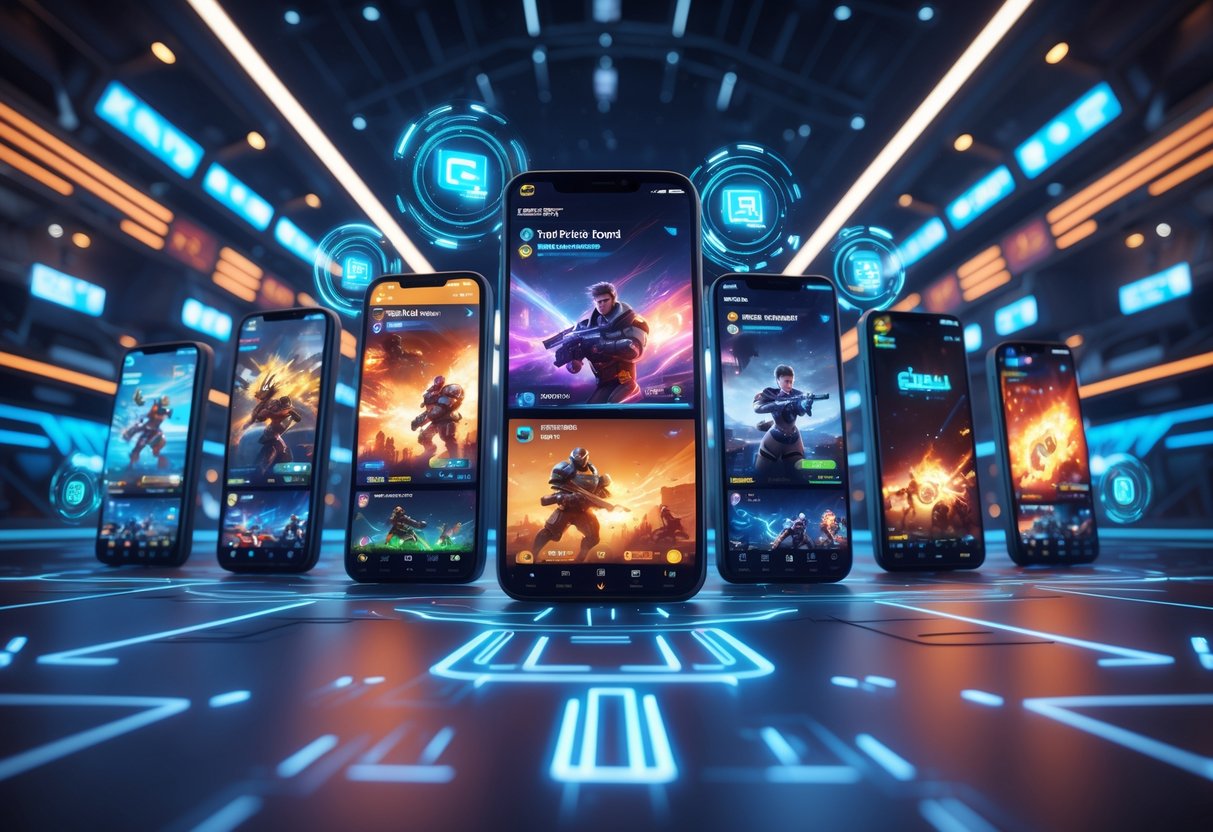
The top mobile esports games have a few things in common. They offer fast-paced multiplayer action, strong anti-cheat systems, and run well on a wide range of phones.
Fast-Paced Multiplayer Action
Mobile esports work because the matches are quick and intense. PUBG Mobile gives you 10-minute battle royale rounds with 100 players. Mobile Legends: Bang Bang promises you’ll be matched up in 10 seconds for 10 minutes of MOBA action.
Brawl Stars keeps things even snappier—matches last just 2-3 minutes. You can play a few rounds on your lunch break, no problem.
The speed isn’t just about short matches. The best mobile esports games include:
- Instant respawns to keep things moving
- Simple controls made for touchscreens
- Quick chat tools like preset messages
Marvel Snap nails this. Card battles wrap up in under 6 minutes, but every choice feels important.
We’ve noticed a trend: top games cut out long waits. Matches start fast, loading screens are short, and menus are easy to navigate.
Fairness and Anti-Cheat Measures
If a mobile esports game isn’t fair, it’s dead in the water. Honor of Kings avoids pay-to-win entirely—everything you buy is just cosmetic. Skill decides who wins, not your wallet.
Call of Duty Mobile uses advanced anti-cheat detection. Their system watches for suspicious behaviour and flags cheaters automatically.
Popular games keep things fair by using:
- Skill-based matchmaking so you play against people at your level
- Frequent balance updates to stop any one character or weapon from taking over
- Tournament restrictions that keep equipment and settings even
Clash Royale does this well. Even though you can upgrade cards, ranked tournaments use standardised levels, so everyone’s on equal ground.
We see developers investing heavily in these systems. One cheating scandal can wreck a game’s reputation overnight.
Device Accessibility
The best mobile esports games don’t require the latest phone. Garena Free Fire runs well on budget devices and still feels competitive.
Brawlhalla lets mobile and PC players face off directly, and mobile users aren’t at a disadvantage.
Key accessibility features include:
- Adjustable graphics for different phones
- Custom controls for all screen sizes
- Offline practice modes for weak connections
Mobile Legends: Bang Bang shines here. The game offers joystick controls, auto-lock, and easy target switching. Even on a basic phone, you can pull off some slick plays.
TFT Mobile matches the PC version step for step. Turn-based gameplay works great on touch.
We’ve found that device accessibility is crucial. If only people with expensive phones can compete, the scene stays small.
How Mobile Esports Games Stay Competitive
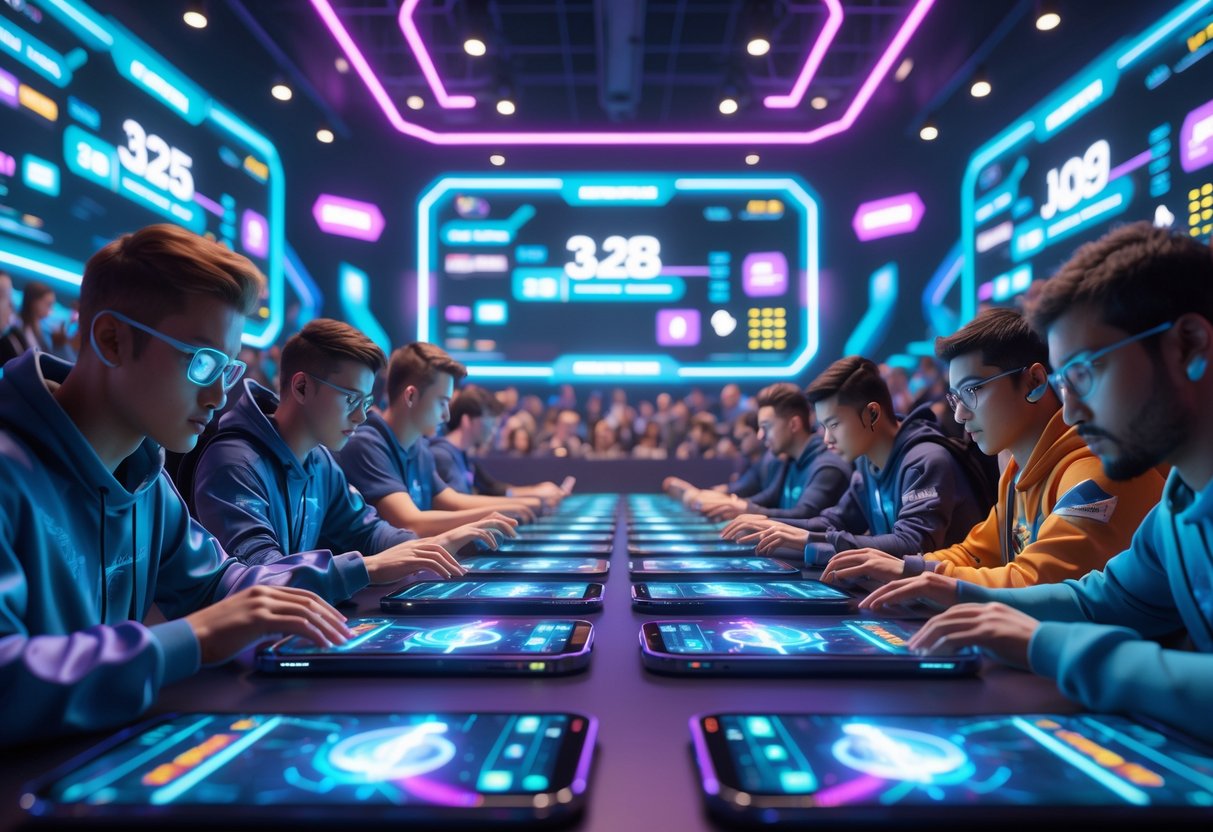
Mobile esports games keep their edge by rolling out regular content updates and carefully tweaking gameplay balance. These updates keep things fresh and competition tight, no matter your skill level.
Regular Updates and New Content
Mobile esports games drop new content every few weeks to keep players hooked. PUBG Mobile pushes out big updates every quarter, adding maps, weapons, and new game modes. They often time these with esports tournaments to build hype.
Mobile Legends: Bang Bang does something similar. The game gets new heroes every month, and older characters get reworked based on what’s happening in competitive play.
Seasonal events matter, too. Brawl Stars introduces special events that test new skills, and if players like them, they sometimes stick around for good.
Clash Royale experiments with rotating challenge modes, letting developers test out fresh mechanics before adding them to ranked play.
Update schedules usually line up with the esports calendar. Big patches land between tournament seasons so they don’t mess up ongoing competitions.
Balanced Gameplay and Meta Shifts
Developers use player data to spot overpowered strategies. TFT Mobile tweaks unit stats every two weeks based on millions of matches.
The meta changes in cycles. New strategies pop up, devs gather data, and then a patch shakes things up again. This way, no single tactic dominates for too long.
Honor of Kings handles this well. Their balance team watches pro matches and tweaks heroes that get picked too much, keeping things fresh for everyone.
Community feedback matters, too. Pro players and streamers often point out balance problems, and developers usually address them in the next update.
Balance changes target different skill levels. Sometimes a character is too strong for casual players but fine in pro play, so devs have to make careful adjustments that work for both groups.
Community and Professional Ecosystems
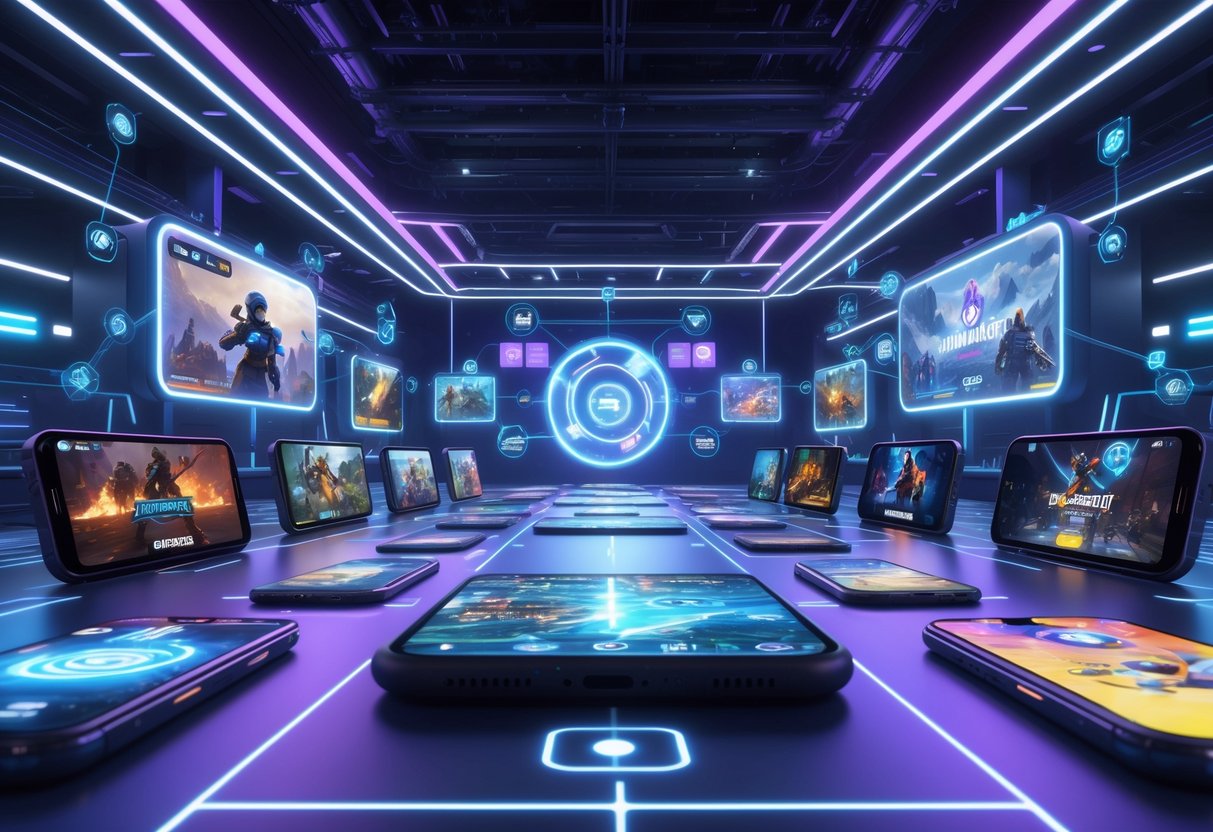
Mobile esports communities have grown from scratch, with grassroots tournaments leading up to professional leagues. Content creators and influencers really drive the growth of these games and help connect fans to the competitive scene.
Grassroots and Amateur Competitions
Local tournaments act as the backbone of mobile esports growth. Games like Mobile Legends: Bang Bang and PUBG Mobile see thousands of small competitions happening every week across different regions.
Discord servers organize daily scrims where amateur teams get their practice in. Many universities now run mobile esports leagues alongside the usual PC competitions.
Regional qualifiers give unknown players a real shot at reaching professional events. Honestly, the path from amateur to pro feels shorter in mobile esports compared to traditional gaming.
Prize pools start small but can add up fast:
- Local tournaments: £50-£500
- Regional qualifiers: £1,000-£5,000
- National championships: £10,000+
Mobile gaming cafés across Asia often run weekend tournaments. These events spark local rivalries and give scouts a chance to spot fresh talent.
Community-run leagues on sites like Battlefy make it simple for teams to find matches. The entry barrier for mobile esports stays much lower than for PC games.
Influencer and Content Creator Impact
Content creators pull massive audiences for mobile esports. Top streamers sometimes attract more viewers than official pro matches.
Where fans watch mobile esports content:
- YouTube: Tournament highlights and guides
- TikTok: Quick gameplay clips and reactions
- Twitch: Live watch parties for tournaments
- Instagram: Team moments and behind-the-scenes
Creators often become unofficial game ambassadors. Their takes on new updates can shape the competitive meta—sometimes for better, sometimes not.
Sponsored content mixes entertainment with competition. Plenty of creators even host their own tournaments, funded by brand partnerships.
Mobile esports really benefit from creators who know the games inside out. Ex-pro players often switch to content creation but keep their competitive edge.
Since mobile viewing is so casual, creators can break down tricky strategies for everyone. That helps the whole scene grow, not just the hardcore fans.
Future Trends in Mobile Esports
Mobile esports are changing fast. New tech is making games more accessible, and competitive scenes are popping up in places you’d never expect. Cross-platform play is also starting to blur the lines between mobile and PC gaming communities.
Technological Advancements
5G networks are shaking up mobile gaming. The ultra-low latency makes competitive matches way more responsive.
Cloud gaming services are tearing down hardware barriers. Now, you don’t need a flagship phone to compete at a high level.
AI-enhanced gameplay is taking over in 2025. Smart matchmaking systems analyze player skill and create fairer matches.
Screen tech keeps getting better. 120Hz displays are showing up on mid-range phones, so mobile players get smooth visuals that rival desktops.
Battery optimization has finally solved the old overheating and dying-battery issues. Modern phones can handle long tournament sessions without breaking a sweat.
Haptic feedback is getting fancier, too. Players can feel weapon recoil and even environmental effects, making mobile games more immersive—maybe even more so than some PC setups.
Growth in Emerging Regions
Southeast Asia keeps leading the way for mobile esports. Indonesia and Thailand are putting on some of the world’s most-watched tournaments.
Latin America is booming right now. Brazil and Mexico are hosting big international events, and prize pools have hit over $1 million.
India’s mobile gaming market is off the charts. With over 400 million mobile gamers, tournament organizers have huge opportunities.
Africa looks like the next big thing for mobile esports. Nigeria and South Africa are building their own competitive scenes around affordable smartphones.
Middle Eastern countries are throwing serious money into esports infrastructure. The UAE and Saudi Arabia are now hosting world championships that pull in global viewers.
These markets prefer mobile over PC because it’s cheaper and easier to access. This shift is forcing traditional esports orgs to rethink their strategies.
Cross-Platform Integration
Mobile-PC crossplay is the new normal for major games. PUBG Mobile and Honor of Kings now let mobile and PC players compete head-to-head.
Tournament formats are changing, too. Some events feature mixed-platform teams or have players switch between mobile and PC mid-match.
Streaming platforms are catching up. Twitch and YouTube now offer mobile-specific viewing modes and features.
Cloud saves and progression systems let players practice on mobile while commuting, then jump on PC at home. That kind of flexibility is bringing more casual players into the competitive scene.
Coaching tools work on both platforms now. Analysis software covers mobile and PC versions, so pro coaching is more accessible than ever.
Traditional PC esports orgs are signing mobile-only teams. This crossover is finally giving mobile esports the respect it deserves in some regions.
Choosing the Best Mobile Esports Game for You
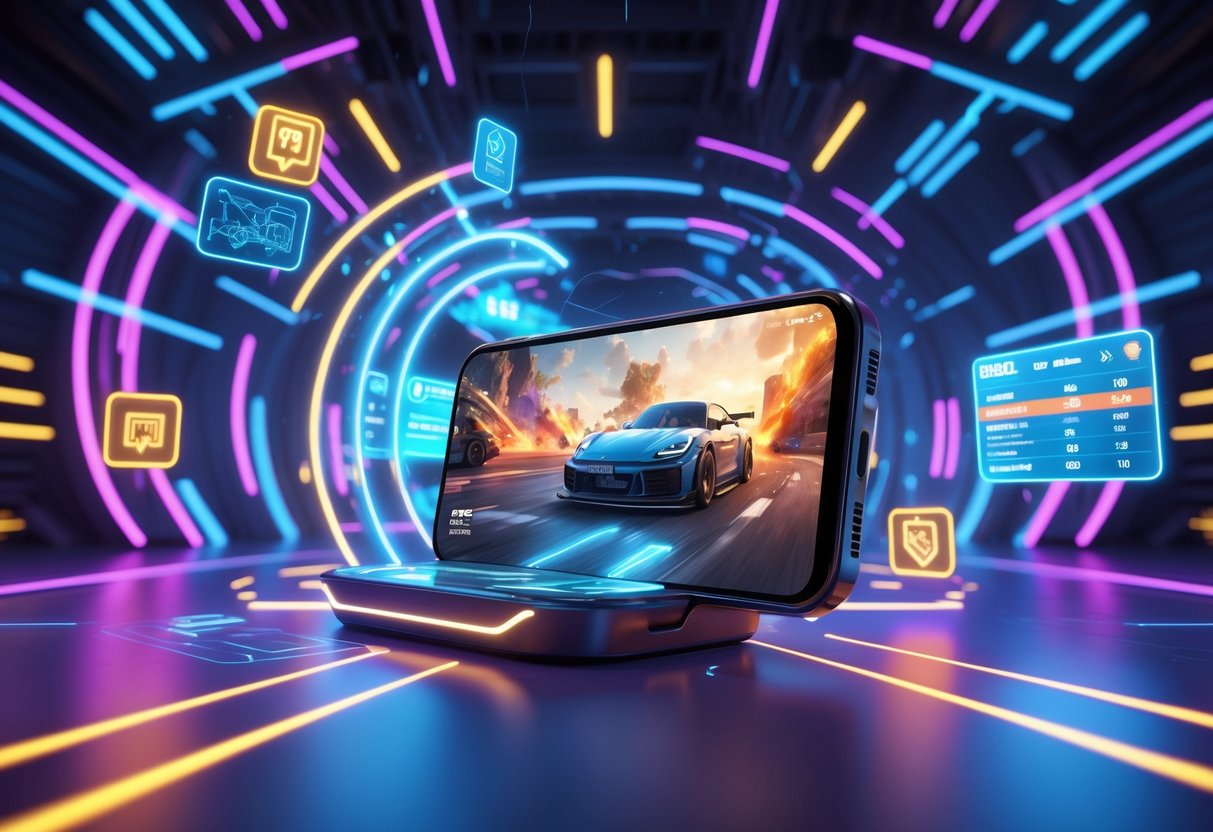
Picking a mobile esports game really comes down to your preferences, your available time, and your competitive goals. Think about your favorite genres, how strong the local scene is, and how serious you want to get before jumping in.
Preferred Genres and Playstyles
Different mobile esports games fit different playstyles. Battle royale fans should look at PUBG Mobile or Free Fire for fast-paced survival matches. These games are quick and demand solid map awareness.
MOBA players usually go for Mobile Legends: Bang Bang or Honor of Kings. Both offer team-based strategy with 15-minute matches. They need good teamwork and character knowledge.
Fighting game fans might enjoy Brawlhalla. It’s got simple controls but still offers deep, tactical gameplay.
Card game lovers should check out Marvel Snap. Matches are under 10 minutes and have unique mechanics like location control.
Casual competitive players often pick Brawl Stars or Clash Royale. Both have short matches with different modes. They’re easy to learn but still reward skill.
Think about how long you want your matches to last. Some games run for just 3 minutes, while others can last up to 20 minutes per round.
Community and Skill Level
Your local community size shapes matchmaking and tournament chances. PUBG Mobile and Mobile Legends have the biggest UK player bases, so you’ll find faster queues and more local events.
Look for tournaments happening nearby. Many mobile esports communities set up local competitions through Discord or gaming centers. That can tell you a lot about the scene’s strength in your area.
Beginner-friendly picks include Brawl Stars and Marvel Snap. Both have smoother learning curves and forgiving ranking systems. If you’re more experienced, you might jump straight into Mobile Legends or PUBG Mobile.
Consider your practice time. Games like TFT Mobile reward deep strategy, while Free Fire is all about quick reflexes. Match your choice to what you’re good at.
Most mobile esports games have training modes. Try a few before you commit to ranked play. Saves you from frustration if a game just doesn’t click.
Competitive Aspirations
Your competition goals matter. Professional esports careers are most realistic in PUBG Mobile and Mobile Legends, thanks to their big tournament circuits and prize pools.
Semi-pro players have options in most big titles. Regional tournaments for Free Fire, Clash Royale, and Brawl Stars offer smaller prizes and need less of a time investment.
Casual competitors can join regular online tournaments in almost every major mobile esports game. Many are free to enter and offer cosmetic rewards instead of cash.
Think about the time you’ll need to put in. Going pro usually means 6-8 hours of practice a day. Semi-pros manage with 2-4 hours. Casual play is a lot more flexible.
Team-based games like Mobile Legends need reliable teammates. If you prefer solo play, Marvel Snap or Clash Royale let you climb the ranks on your own. Decide if you want to compete solo or as part of a group.
Check out prize pool histories for your chosen games. That gives you a sense of the scene’s financial health and growth potential.
Impact of Mobile Esports on the Gaming Industry
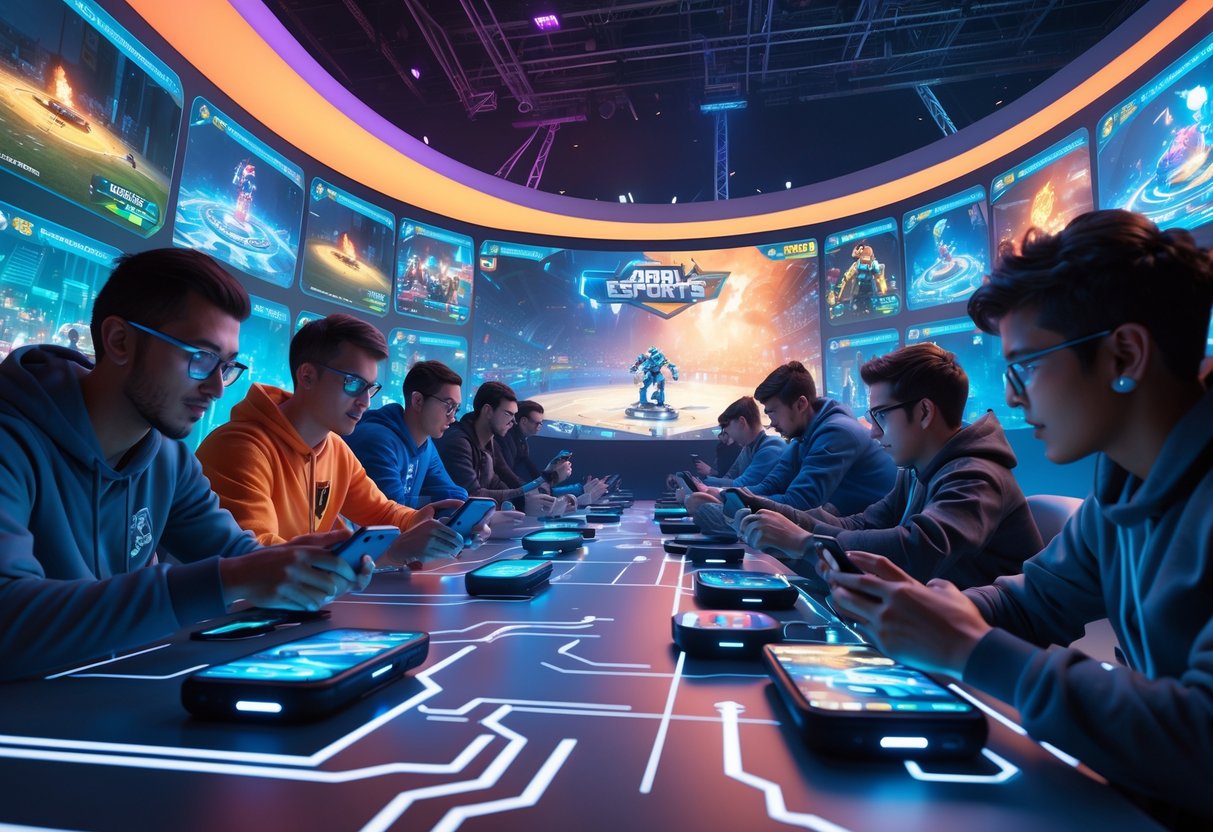
Mobile esports has turned competitive gaming from a niche PC and console hobby into a mainstream entertainment powerhouse. The industry now drives major sponsorship deals and pushes professional teams to expand worldwide.
Mainstream Recognition
Mobile esports has smashed through old barriers that kept competitive gaming in specialist circles. Games like PUBG Mobile and Mobile Legends: Bang Bang now pull in millions of viewers from all over.
These viewership numbers sometimes rival traditional sports broadcasts. Big broadcasters have started giving mobile esports tournaments prime-time slots.
The accessibility is huge. Pretty much everyone owns a smartphone, so mobile esports feels a lot more relatable than PC gaming.
Some key mainstream milestones:
- TV coverage on major networks
- Olympic committee recognition in several countries
- Inclusion in university sports programs
- Features in mainstream sports media
Mobile platforms have made participation more democratic. Players from developing markets can compete at the top without pricey gaming setups.
Sponsorship and Team Growth
The mobile esports surge has pulled in sponsors from outside gaming. Fashion brands, food companies, even car manufacturers now see mobile esports as a way to reach younger fans.
Prize pools for mobile games have exploded. Big tournaments now offer hundreds of thousands in winnings, sometimes matching PC esports.
Pro organizations have started building rosters just for mobile games. Teams that once only cared about League of Legends or Counter-Strike now have mobile squads.
Current sponsorship trends:
- Fashion brands teaming up with mobile teams for jerseys
- Telecom companies sponsoring whole leagues
- Food and beverage brands opening mobile gaming cafés
- Financial services targeting mobile esports fans
This growth has opened up new career paths beyond just playing. Now there are coaches, analysts, and content creators who focus only on smartphone competitions.
Regional mobile esports leagues have popped up in Asia, Europe, and the Americas. These give amateur players a real shot at going pro.
Frequently Asked Questions
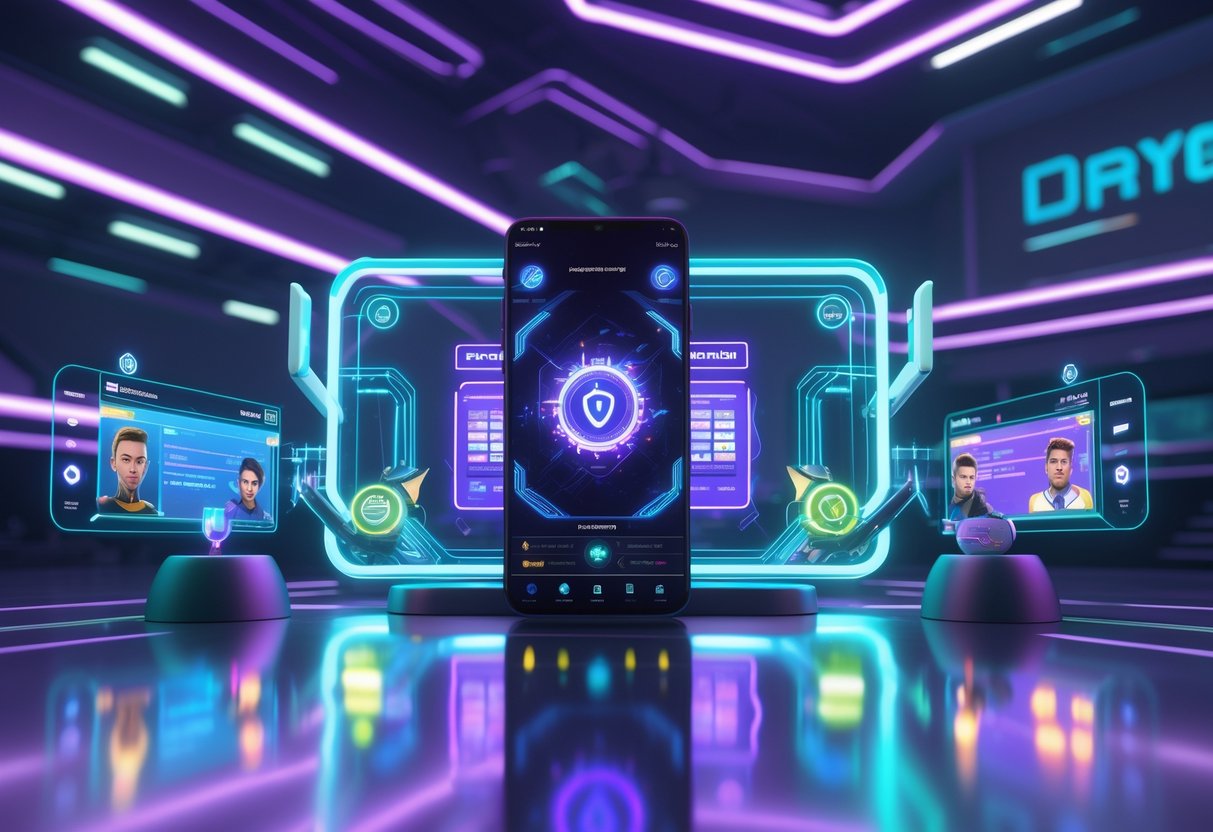
Mobile esports keeps growing in 2025. Games like PUBG Mobile and Mobile Legends lead with massive prize pools and huge viewership. Players often wonder which games offer the best shot at competition and what makes a mobile game ready for tournaments.
What are the top-rated mobile eSports games this year?
PUBG Mobile holds the crown for competitive mobile games in 2025. The battle royale title keeps its esports scene lively with big prize pools and regular tournaments.
Mobile Legends: Bang Bang comes in second, backed by a strong competitive community. The MOBA offers fast matchmaking and 10-minute games—perfect for mobile tournaments.
Call of Duty Mobile still attracts competitive players with its classic multiplayer modes. The game gets regular seasonal updates and has customizable controls.
Free Fire rounds out the top games with 50-player matches and quick 10-minute rounds. Its fast pace works well for tournaments and streaming.
Which mobile games are making waves in the eSports tournaments currently?
Mobile Legends: Bang Bang leads tournament participation in many countries. The game’s esports scene is packed with pro teams and regular international events.
PUBG Mobile puts on some of the biggest mobile esports events worldwide. Major tournaments feature prize pools that rival PC esports.
Clash Royale still has a strong esports presence, thanks to constant updates and varied tournament formats.
Honor of Kings is picking up steam internationally after its global launch. Tencent is pouring resources into building a competitive scene for this MOBA.
Could you suggest some mobile games with the most active competitive scenes?
Brawl Stars has built one of the most lively mobile esports ecosystems out there. You’ll spot tournaments popping up all the time, and it’s easy to catch pro matches if you’re curious.
TFT Mobile stands out as the biggest autobattler scene on mobile. The game keeps players on their toes with frequent meta shifts and major patches, so the competition never gets stale.
Marvel Snap, since 2022, has gathered a surprisingly strong competitive community. There’s Battle Mode for serious showdowns, and you’ll find plenty of community tournaments if you poke around.
Pokémon Unite makes competitive play really approachable, and they keep rolling out seasonal updates. The 5v5 MOBA setup fits team tournaments perfectly.
Are there any up-and-coming mobile games that are gaining traction in eSports?
Squad Busters looks like it could shake things up—Supercell’s latest game already throws players into some wild, colorful battles. There’s a lot of potential for serious competition here.
Honor of Kings is pushing its international competitive scene hard right now. Tencent keeps pouring resources into esports infrastructure, so expect some big tournaments soon.
Marvel Snap just keeps growing, pulling in more competitive players every month. The fast-paced matches and quirky card mechanics seem to really grab tournament organizers.
Pokémon Unite isn’t slowing down, either. With steady content updates and easy-to-learn gameplay, it keeps attracting new players who want to compete.
How do the prize pools in mobile eSports games compare to those in traditional eSports?
Mobile esports prize pools have shot up in recent years, but honestly, they’re still catching up to the biggest PC games. PUBG Mobile, for example, now runs tournaments that can hand out hundreds of thousands of pounds.
Mobile Legends: Bang Bang actually offers some of the largest prize pools in mobile esports. The top international tournaments can be life-changing for the best teams.
Every year, the gap between mobile and traditional esports prizes gets a little smaller. Sometimes, mobile viewership even rivals—or beats—PC games, especially in certain regions.
Regional differences play a huge role in prize distribution, though. Asian markets tend to offer much bigger prize pools than what you’ll see in the West right now.
What features should I look for in a mobile game to know it’s good for eSports competition?
Look for fast and reliable matchmaking—it’s a sign the game can handle tournament play. Mobile Legends, for example, claims you can find a match in just 10 seconds, which keeps things moving.
If a game has spectator modes and replay systems, that’s usually a good sign the developers care about esports. You can break down gameplay, catch mistakes, or just save those wild moments for later.
Frequent content updates? That’s a big plus. When a game keeps shaking up its meta, tournaments stay fresh and unpredictable.
Cross-platform play really helps grow the competitive scene. And honestly, features like voice chat and customizable controls make tournaments way less frustrating.
A balanced progression system is key. You want skill to matter more than how much someone spends—nobody likes a pay-to-win situation in esports.

